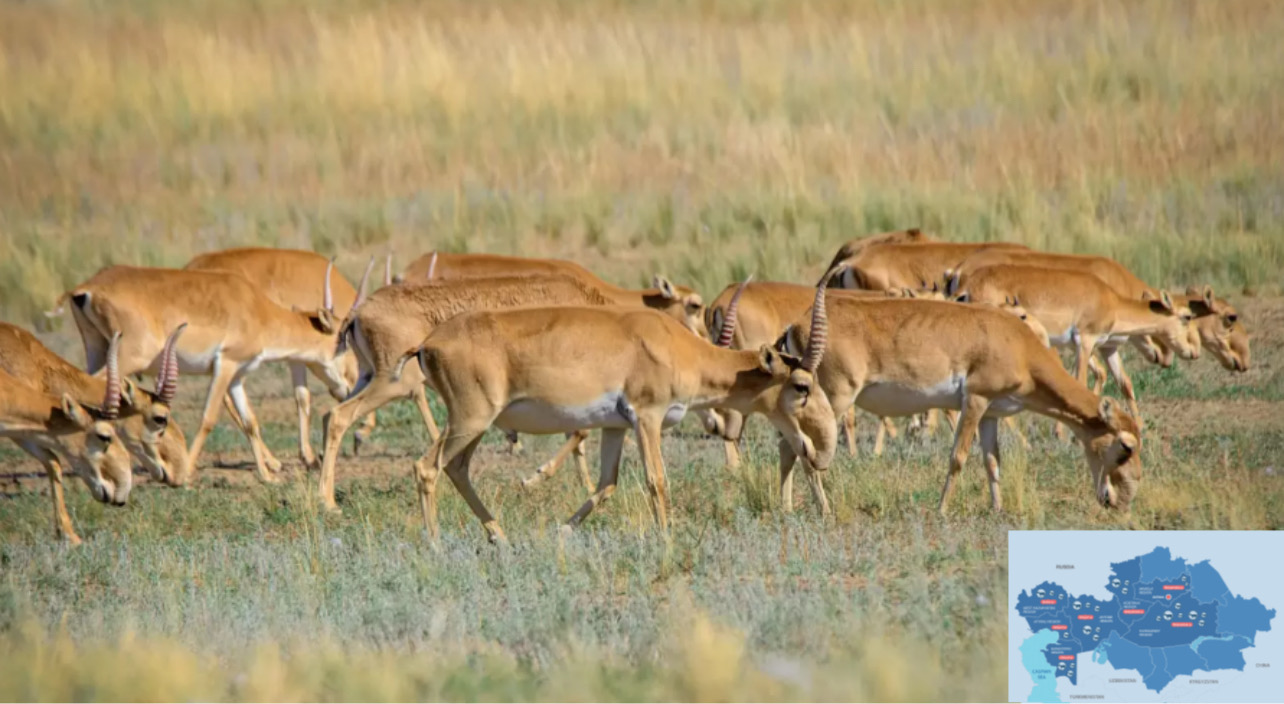ASTANA — The vast steppes of Kazakhstan have long been home to a diverse array of wildlife, and among them, the saiga antelope holds a special place. However, the recent surge in the saiga population has tested the delicate equilibrium between agriculture and conservation, as farmers grapple with the growing number of saigas.
Kazakhstan’s treasured saiga: a sacred marvel on the brink of extinction
The saiga, a small antelope distinguished by its unique short trunks, is considered a sacred animal among the Kazakh people. With a body length ranging from 110 to 146 centimeters and a weight spanning approximately 23 to 40 kilograms, this cloven-hoofed marvel possesses a unique charm.
Its prominently humped nose and horns that can grow up to 30 centimeters add to its allure. A migratory species capable of covering extensive distances, the saiga can even navigate across small bodies of water.
Tragically, the saiga faces the looming threat of extinction. Since 1996, it has been listed on the International Union for Conservation of Nature’s (IUCN) Red List, and by 2002, it was categorized as critically endangered.
In 1999, Kazakhstan instituted a sweeping ban on saiga hunting, with only a few exceptions permitted for scientific research. This protective measure has been extended six times, highlighting Kazakhstan’s steadfast commitment to saiga preservation. Remarkably, 95% of the world’s saiga population is concentrated in Kazakhstan, with the remaining 5% scattered across Russia and Mongolia.
The agricultural conundrum: saiga population surge
The management of saiga population growth is a topic of extensive discussion in Kazakh society, as the burgeoning numbers of these animals adversely affect the rural economy.
Nationwide assessments indicate a potential surge, with the saiga population in Kazakhstan possibly reaching 2.5 million individuals. The antelopes have decimated pastures and crops, causing significant monetary losses estimated at around 12 billion tenge ($25 million).
In the western parts of Kazakhstan, saigas have devastated the pastures of 1,300 farms, particularly impacting the Akmola and Aktobe regions. Additionally, 36 farms in 13 rural districts of the Karagandy Region were affected by the saiga influx.
Seeking proactive solutions, farmers in the western regions propose using nets to enclose fields, creating a protective barrier against saiga intrusions. This approach aims to balance safeguarding crops with ensuring the well-being of the saiga population. However, this ad-hoc measure appears insufficient. In a recent plea to authorities, farmers in the Akmola, Aktobe, Karagandy, and West Kazakhstan regions called for regulatory actions.
Regulatory steps for saiga conservation
Recognizing the need for intervention, Kazakh officials have included saigas to the list of regulated animals on Sept. 19. Special teams will be deployed to regulate saiga populations in the steppes, supervised by staff from the Hunting and Wildlife Management Department and the production association of the Ministry of Ecology and Natural Resources of Kazakhstan. The target is to cull a total of 200,000 saigas.
Contrary to expectations, there are no plans to extend the moratorium on saiga hunting in Kazakhstan in 2024. Instead, governmental bodies propose storing saiga horns in state enterprises and producing canned meat from wild ungulates.
The saiga dilemma in Kazakhstan reflects the broader challenge faced by nations: how to strike a harmonious balance between conservation efforts and the demands of an expanding population.



